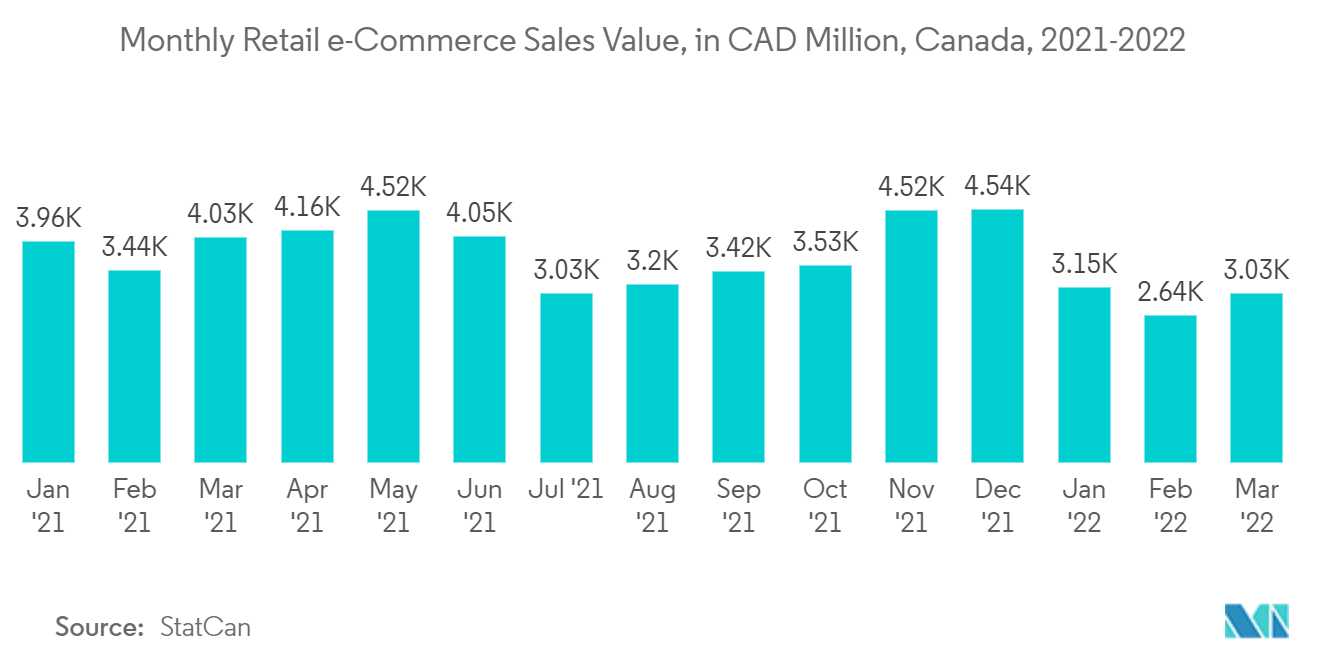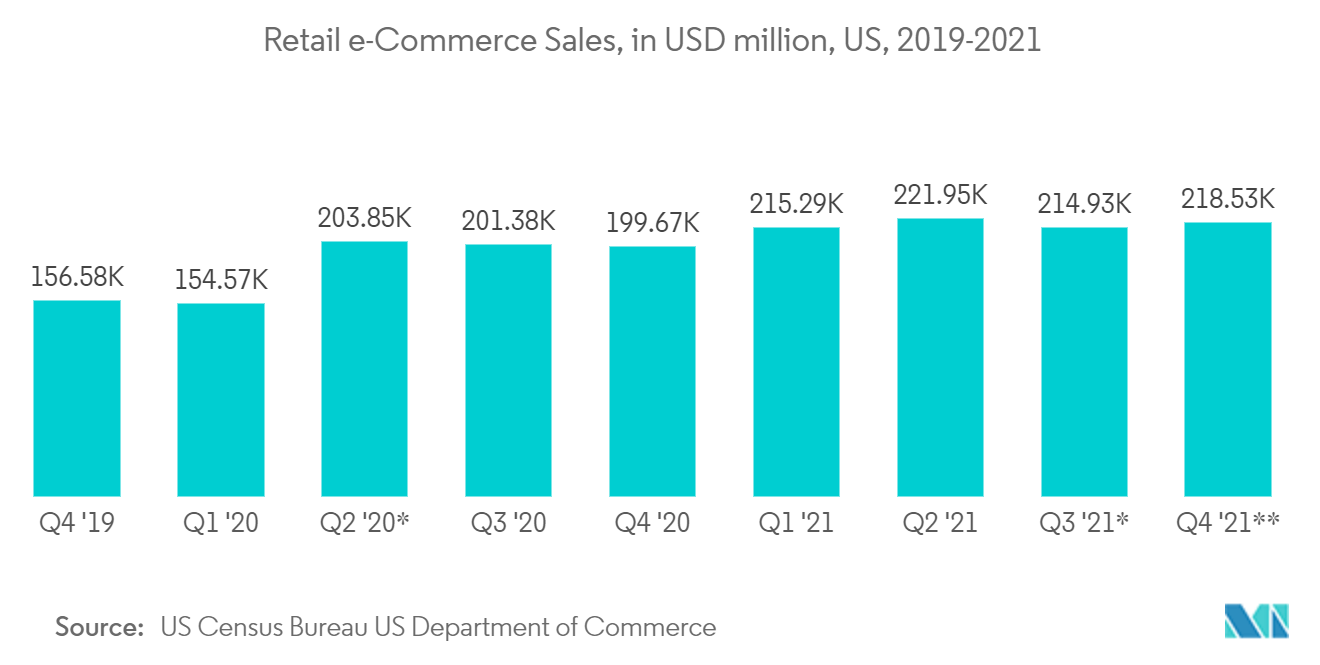Market Trends of North America B2B E-commerce Industry
This section covers the major market trends shaping the North America B2B E-commerce Market according to our research experts:
Popularity of Retail Business Operations Online to Drive the Market
- The online B2B marketplace gained popularity much later than the retail B2C and C2C e-Commerce options gaining popularity in North America. The ecosystem created by the early adapters of these retail channels shaped the favorability of online operations, creating promising prospects for the B2B e-Commerce platforms. The growth of retail e-Commerce platforms continues to bolster the evolution of the B2B e-Commerce marketspaces online, witnessing new retail and wholesale channel partners shifting operations online.
- According to the US Census Bureau, e-commerce sales in the first quarter of 2022 accounted for 14.3% of the total sales, registering an increase of 6.7% compared to the sales in the first quarter of 2021. The rising popularity of retail e-commerce indicates customer favorability, resulting in the ecosystem's evolution and attracting new e-commerce platforms and players in the market. This also develops the market space for the B2B e-commerce platforms and their users.
- Further, specialized e-commerce retail sales reflect the potential offered by the scope for specialized B2B e-commerce marketplace, catering to the needs of a particular end-user industry. For instance, according to StatCan, the e-commerce retail sales in Canada in 2020 in the food and beverages sector accounted for CAD 4.12 billion, with sales of CAD 3.92 billion for clothing and clothing accessories and 3.75 billion for health and personal products.
- Also, many retailers are operating purely from online resources for a channel instead of setting offline facilities to leverage the wide reach offered by the platforms. For instance, according to the US Census Bureau, out of the total retail sales by non-store retailers in the United States in 2020 accounted for USD 978.3 billion, the e-commerce sales accounted for USD 705.7 billion, promising significant prospects for the online e-commerce platforms.

United States Will Dominate the Market Growth
- Modern buyers prefer online research for prices and availability offered by different suppliers to make the right decision. As a result of the COVID-19 pandemic, many new-age digital investors and entrepreneurs are switching to digital supply chain purchase options permanently, leveraging the B2B e-Commerce platforms in the US.
- It is beneficial to shift various aspects of the business on a single channel, online or offline. Hence, US businesses prefer to shift most of their operations online, leveraging the prevalent e-commerce platforms for wholesale and retail. For instance, according to the Annual Wholesale Trade Survey by the US Census Bureau, the e-commerce sales of US merchant wholesale trade sales via MSBOs accounted for around USD 1.04 trillion in 2020 and USD 1.10 trillion in 2019, compared to 0.99 trillion in 2017. The post-pandemic market is registering an increase in online adaptation.
- Further, the increasing interest for small businesses to shift their operations online drives the ecosystem's growth. As a result, several small companies from different parts of the country show interest, based on the existing online participants and emerging new businesses to try the online market space. For instance, according to the Small Business Pulse Survey by the US Census Bureau, 43% of New Hampshire's whole trade small businesses planned to develop online sales or websites in the US in 2021, compared to 26.5% of the companies in Michigan, and 25.7% from Connecticut.
- Third-party e-commerce solutions are availed widely in the region, with more businesses joining the internet community to showcase their products. The country witnesses new emerging online marketplaces encouraging users to enter online sales. For instance, according to Sana Commerce, 56% of the manufacturers expect third-party e-commerce B2B sales platform solutions to generate the most revenue in the US from 2021 to 2026, followed by 52% for online marketplaces and 44% for the homegrown e-commerce platform.


